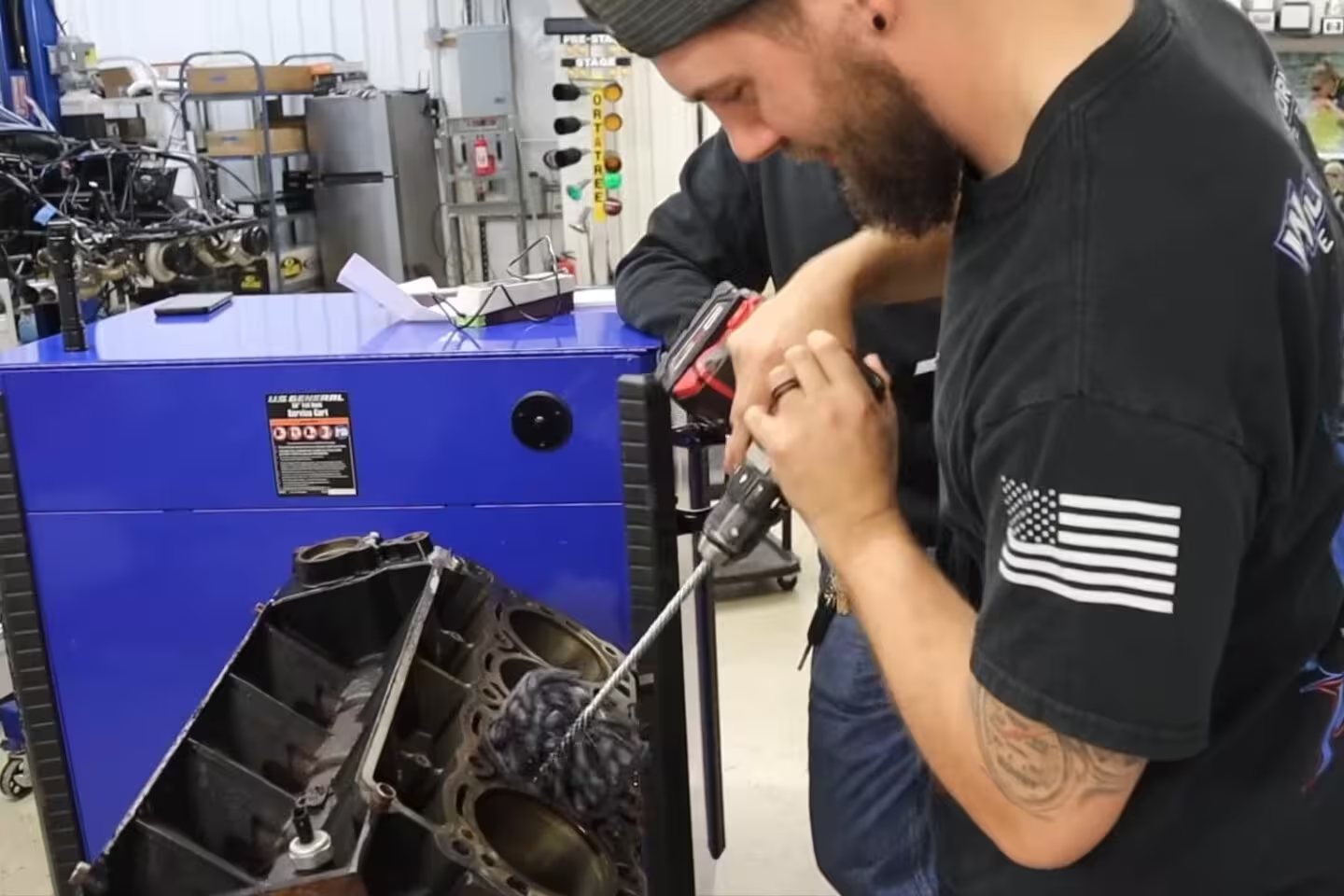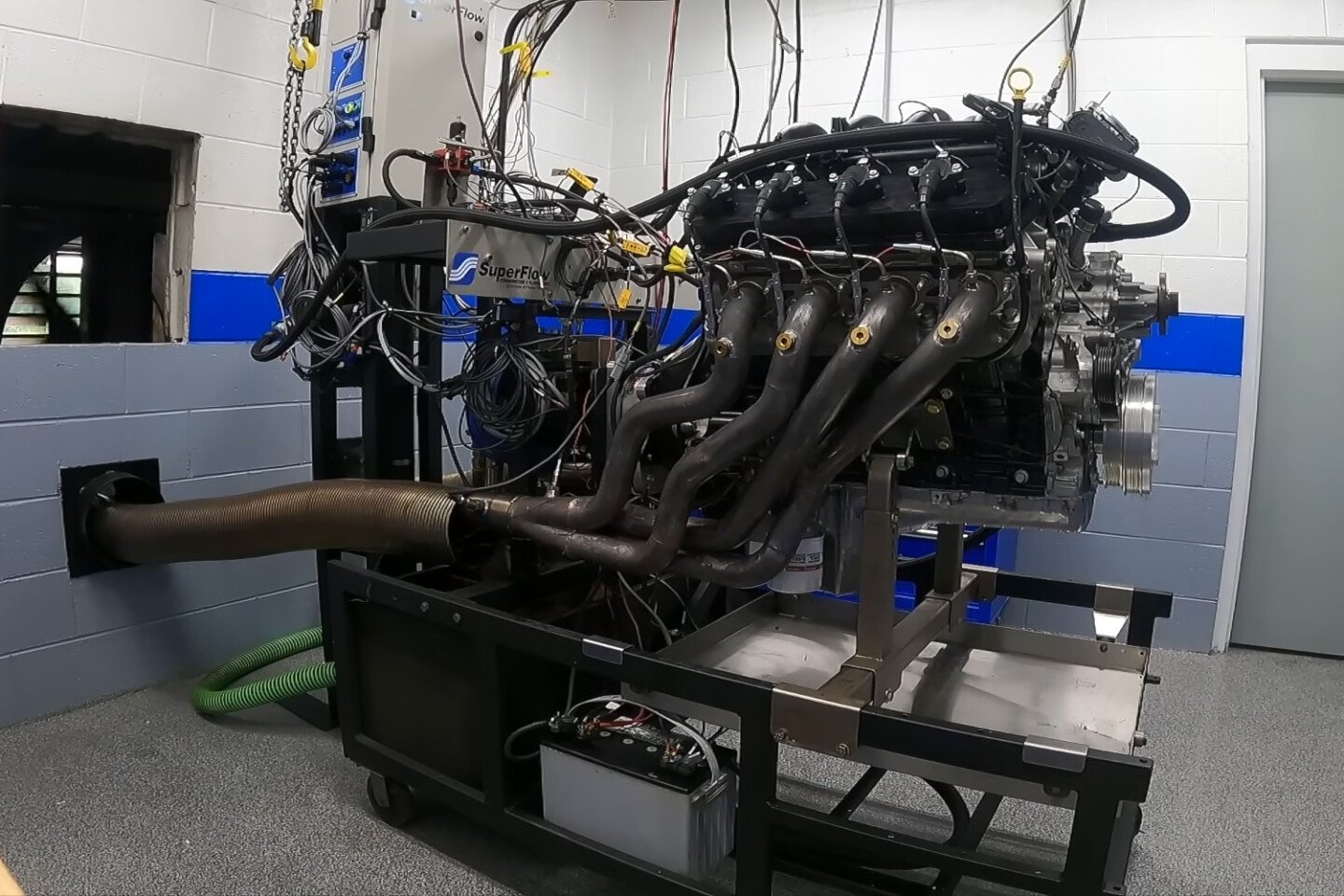For the past decade or so, the term “junkyard LS” has been so overused and overhyped that it has lost a lot of its pizazz. However, that doesn’t mean there’s no such thing as junkyard performance. While on the Blue Oval side of the equation, not only are the Coyotes expensive to acquire — even out of the junkyard — but they also tend to be on the spendy side to build. Ford’s latest pushrod engine — the 7.3-liter Godzilla — is proving to be quite a junkyard runner.
This video above, brought to you by “REVan Evan” Smith and Brian Wolfe of Willis Performance, covers a Godzilla engine project that began life in a scrapyard. Wolfe pulls back the curtain and shows the true cost of everything up to this point without any funny math. The same with the engine’s power numbers and gains. It doesn’t hurt that the engine was a strong runner right out of the gate, posting the exact same power numbers as we saw from our Godzilla crate engine.
Wolfe explains what was done to the engine once it got home from the wrecking yard and why he did what he did to get it back into fighting shape. Then, with some targeted upgrades (which he starts discussing at the 7:18 mark in the video) and buying smart, the whole shebang comes in under the $4,000 mark. That’s no small feat as $4,000 doesn’t really get you all that much in today’s economy. But the real surprise is the new power numbers.
The junkyard engine was torn down and gone through to bring it back up to factory specs. The good ol’ dingleball hone got the cylinders back into tip-top condition.
Would you believe that a little over $2,000 in upgrades to the engine netted more than 100 horsepower at the flywheel? The new dyno graph shows peak numbers of 627 horsepower and 646 pound-feet of torque, from a package with less than $4,000 into it. And don’t let the peak numbers alone wow you, Wolfe dives into the curve and powerband, comparing it to a 408-cube LS engine and dissects where it wins (basically everywhere) and where it loses in the comparison.
The best part is that this is only Phase 1, with Wolfe’s Phase 2 and Phase 3 plans being revealed towards the end of the video. So, you’ll have to watch it all the way through to get the full story, and you’re probably as eager as we are to see the next dynos of this cool project engine.
Click Here to Read the Full Original Article at DragzineDragzine…


